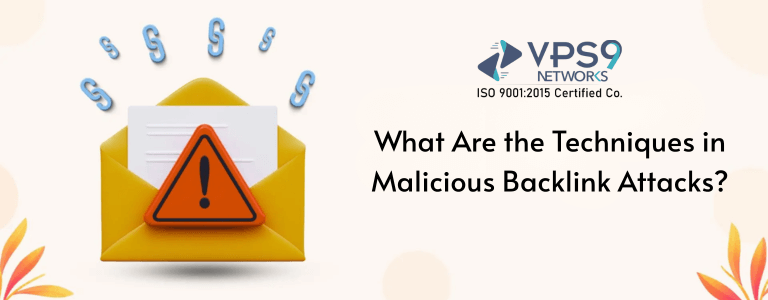Introduction
In digital marketing, building authority and trust is paramount. Search engines, especially Google, utilize backlinks as a primary measurement of a website’s value and credibility. Backlinks should ideally be earned organically through good content and authentic engagement, but not all backlinks are created with good intent. Some backlinks are part of harmful attacks intended to damage rather than help.
If you invest in SEO, it’s critical to understand these attacks, how they work, and what you can do to protect your site. This blog addresses the methods for creating malicious backlinks, the damage the backlinks can cause, and what can be done proactively for defense.

What Are Malicious Backlinks?
Malicious backlinks are hyperlinks from spammy, low-quality, or suspicious sites pointing to your domain, with the goal of damaging your SEO performance. Unlike legitimate backlinks that are meant to provide value to your content or share a helpful resource, these links are placed as part of a negative SEO campaign.
Links can stem from hacked sites, link networks, unrelated resources, or even automated technologies that will churn out links at scale. To Google or other search engines, they may appear to be manipulative and unnatural, and This can result in ranking drops or penalties, despite you having no involvement in creating those links.
Why Are Malicious Backlink Attacks Carried Out?
The motives behind these attacks vary, but they can generally be classified into three categories:
First, competitive sabotage. In highly competitive industries, you have players who are unethical and will employ backlink attacks to try to push competitors out of the top rankings on search engines.
Second, black hat SEO experiments. Some attackers will use your site’s domain as a guinea pig to see how the Google algorithm reacts to large amounts of spam or other manipulative behaviors.
Third, reputation damage. A business or an individual may be the target simply to damage their online reputation with an association of distasteful or inappropriate content
Regardless of the motive, the damage is often the same: loss of organic traffic, search visibility, and credibility.

Most Common Techniques in Malicious Backlink Attacks
Over the years, various mechanisms have arisen that attackers utilize to perpetrate backlink sabotage. These techniques can vary greatly in difficulty and motive but share a common goal of degrading your SEO health.
Spammy Link Farms
Among the most traditional and widely-used strategies involves pointing backlinks from link farms, a collection of sites expressly for the purpose of linking. Link farms will often have low domain authority, and normally don’t provide any real value from their content. An abrupt rise in such backlinks could indicate that your backlink profile looks unnatural.
Anchor Text Overload
Hackers can spam your site with a slew of backlinks that originate from the same anchor text repeatedly. Many times, these would be exact-match commercial keywords (eg. “buy shoes online”) or, even worse, some bizarre related term (e.g. “gambling”, “porn”, “viagra”) that will indicate to search engines that the backlinks are being manipulated, and could earn the site penalties or worse.
Hacked Sites and Hidden Links
Some advanced attacks involve hacking into websites and adding hidden links to your domain. Users of the website will not see the links, but search engine crawlers will. Usually, these links are excessively buried in the HTML, or styled to be hidden from users with CSS.
301 Redirect Attacks
A different technique involves utilizing expired or penalized domains and creating a 301 redirect to your site. This will transfer the old domain’s bad reputation to your site and could impact your reputation with search engines.
Forum and Blog Comment Spam
Even though comment sections are more frequently no-followed, attackers still spam blog comments, forums, and social media posts with irrelevant backlinks to your site. While this content may appear benign, the volume and association with spam can be problematic.
Private Blog Network (PBN) Abuse
Certain attackers use or rent out PBNs networks of low-quality sites built purely to game the search rankings. If your site has links coming from these sites, it could look like you are also trying to manipulate rankings.
Mass Link Drops and Bursts
Generating a sudden spike of backlinks over a short period of time generates another red flag to search engines. This unnatural growth pattern is another indicator of either manipulation or attack on your backlink profile and could, at worst, lead to throttled rankings for a period or indefinitely.
Cloaked Links and Fake Pages
Attackers sometimes create fraudulent landing pages that conceal your website’s link behind cloaked redirects. Users may not even arrive at your website, but the link provides an association that imparts a bad reputation.
How Malicious Backlinks Impact Your Website
The impact of toxic backlinks varies based on the attack’s scale and the robustness of your existing backlink profile In the worst-case scenario, a manual action by Google on your site usually requires you to submit a reconsideration request to remove the action.
More commonly, harmful links trigger an algorithmic penalty—a subtler but still damaging ranking drop caused by changes in how Google assesses your site. Your content may be less visible on search engine results pages (SERP), leading to an organic traffic and possible revenue drop.
Over time, a bad backlink profile may also affect your domain authority, making it difficult to rank content, and even with good SEO practices.

Ways to Identify Suspicious Backlinks
Swift detection and response are essential. While manual scrutiny of every link isn’t necessary, you should periodically monitor your backlink profile for unusual activity. If you observe a sudden increase in new backlinks, especially if they originate from websites that do not appear to be heavily related to your site’s content or are from a different country, this could indicate an attack. Likewise, if you see patterns with anchor text that appears awkward or is otherwise unrelated to your content, this is an indication of a possible attack
Tools like Google Search Console, Ahrefs, SEMrush, and Moz allow you to monitor your backlinks and detect unusual patterns. Look for:
- Links from domains with low authority
- Sites with no connection to your niche
- Sudden influxes of backlinks
- Spammy or keyword-stuffed anchor texts
Acting early can make the cleanup process much easier and prevent long-term SEO damage.
Preventing and Handling Backlink Attacks
While you can’t completely prevent backlink attacks, you can reduce your exposure and mitigate their impact.
Begin with regular backlink audits. Establish a month or bi-weekly schedule for link profile analysis. When you see odd behavior, address it quickly.
Afterward, use Google’s Disavow Tool to disavow negative backlinks. The Disavow Tool tells Google to disregard some links when they evaluate your website. The Disavow Tool should be used judiciously, but it can effectively neutralize toxic associations.
Make sure your own site is secure as well. Many attacks include inserting links through hacking or vulnerabilities into your own content. Keep your CMS, plugins, and themes up to date and use basic security such as SSL, two-factor authentication, and backups.
Lastly, inform your team or SEO agency about the perils of negative SEO. Educate your team or SEO agency on the risks of negative SEO. A well-meaning but low-quality link acquisition effort can sometimes do more harm than good.
Final Thoughts
Malicious backlink attacks are an unfortunate fact of life in the world of digital marketing. They can be subtle and stealthy, eroding years of SEO work almost silently. Your best defense is vigilance, knowledge, and prompt action.
If you know how these attacks function, you can monitor your backlink profile and proactively respond by disavowing or removing the toxic links. This will help protect your site and maintain your search engine visibility.
Excellent and memorable concluding sentence. No change needed. Stay informed, stay vigilant, and stay on top of your backlink profile.



